Major Keith Haring exhibition in Pisa, featuring 170 works from the Nakamura Collection. Photos
In Pisa, at Palazzo Blu, the Keith Haring exhibition, a retrospective dedicated to the great American artist, kicks off from Nov. 12, 2021 to April 17, 2022, organized by the Pisa Foundation in collaboration with MondoMostre and with the extraordinary participation of the Nakamura Keith Haring Collection. The exhibition, curated by Kaoru Yanase, Chief Curator of the Nakamura Keith Haring Collection, traces the brief but significant career of Keith Haring (Reading, 1958 - New York, 1990), universally recognized as one of the fathers of street-art, who stayed in Pisa in 1989 to paint on a wall of the convent of San’Antonio the very famous mural Tuttomondo, his last work as well as Haring’s only permanent public work in Italy. The project grew out of a chance meeting between the artist and young student Piergiorgio Castellani that took place in New York in 1987. Castellani proposed to Haring that he make something big in Italy, and the artist agreed; that was how the “Keith Haring Italian Project” took shape. The monumental painting, which occupies an area of 180 square meters, has over the years become one of the main attractions of the city of Pisa, the custodian of one of the artist’s last great works: a hymn to joy that to this day is considered his artistic testament.
The exhibition presents for the first time in Europe a rich selection of works, more than 170, from the Nakamura Keith Haring Collection, the personal collection of entrepreneur Kazuo Nakamura, which is located in the museum dedicated to the artist, in Japan (Nakamura, a Keith Haring enthusiast, began collecting his works since 1987). Part of the collection, and on display in Pisa, are works ranging from Haring’s earliest works to his latest, many complete series such as Apocalypse (1988), Flowers, (1990) and a variety of other drawings, sculptures as well as large works on canvas. Widely recognized for his brightly colored and jubilant works of art, Haring’s works are familiar and well known even to those unfamiliar with his short artistic parabola because his stylized and moving little men, hearts, dogs, and signs in general are part of the baggage of public images and beyond around the world, and it is these that have made him a symbol of 1980s pop culture and art.
The exhibition unravels in chronological order and also delves into the wide range of expressive techniques he investigated (painting, drawing, sculpture, video, murals, public and commercial art) beginning with his subway drawings, Subway Drawings, 1981-1983 (white chalk/paper/wooden panels), which remain among his most known and acclaimed, to the portfolio of seventeen silkscreens entitled The Bluprint Drawings, his last series on paper reproducing the earliest and purest visual narratives born in 1981, published in 1990, a month before his death.
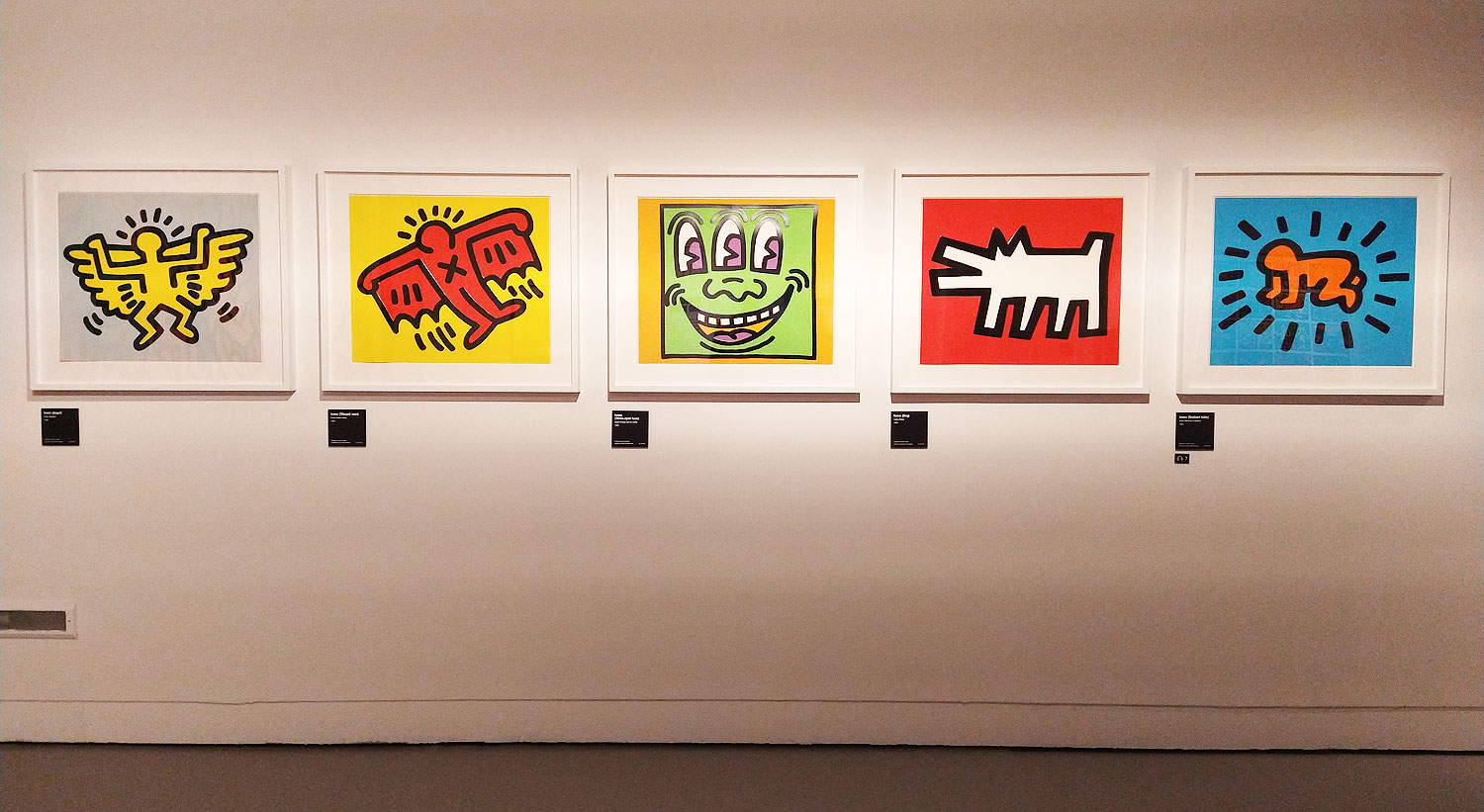
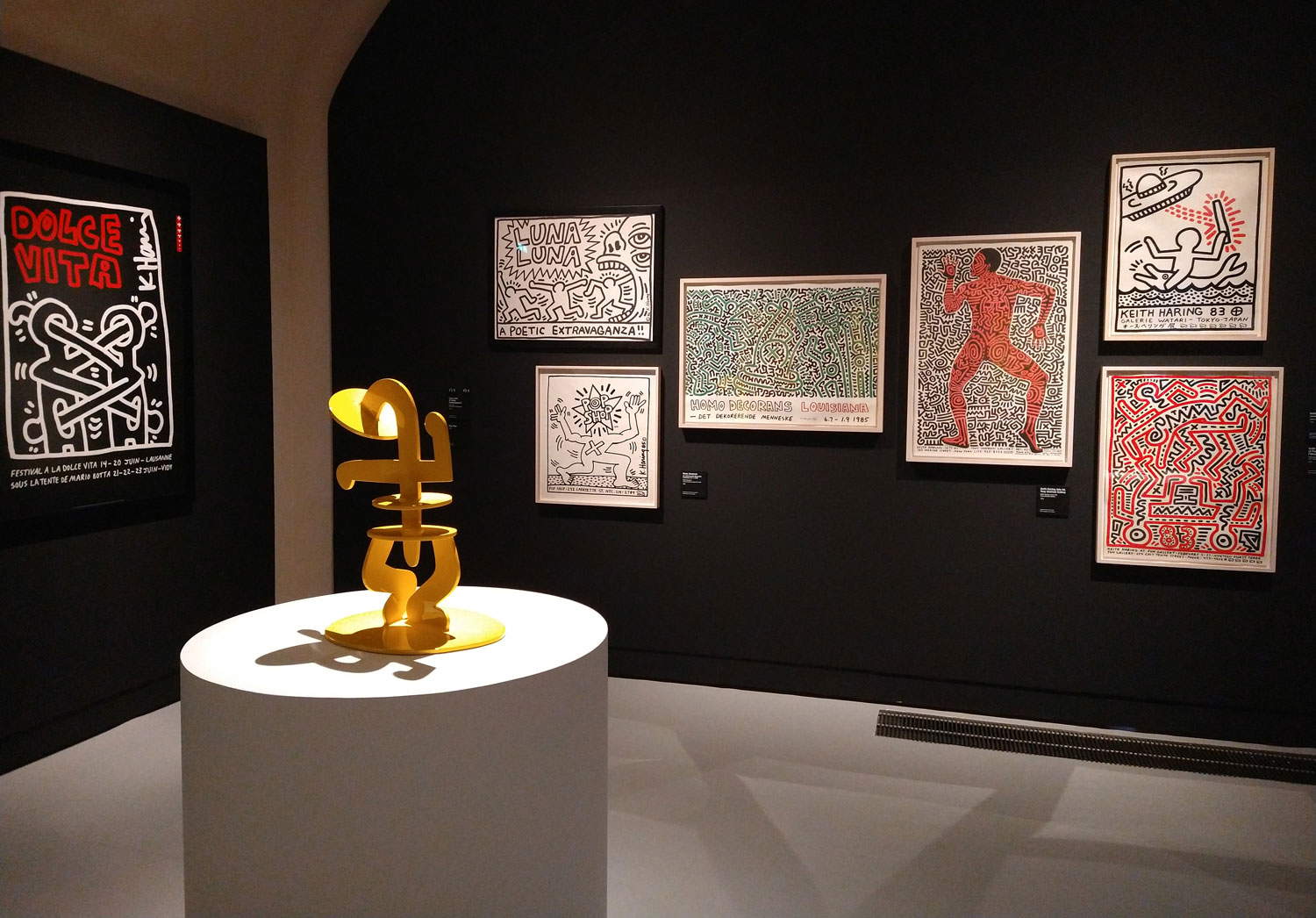
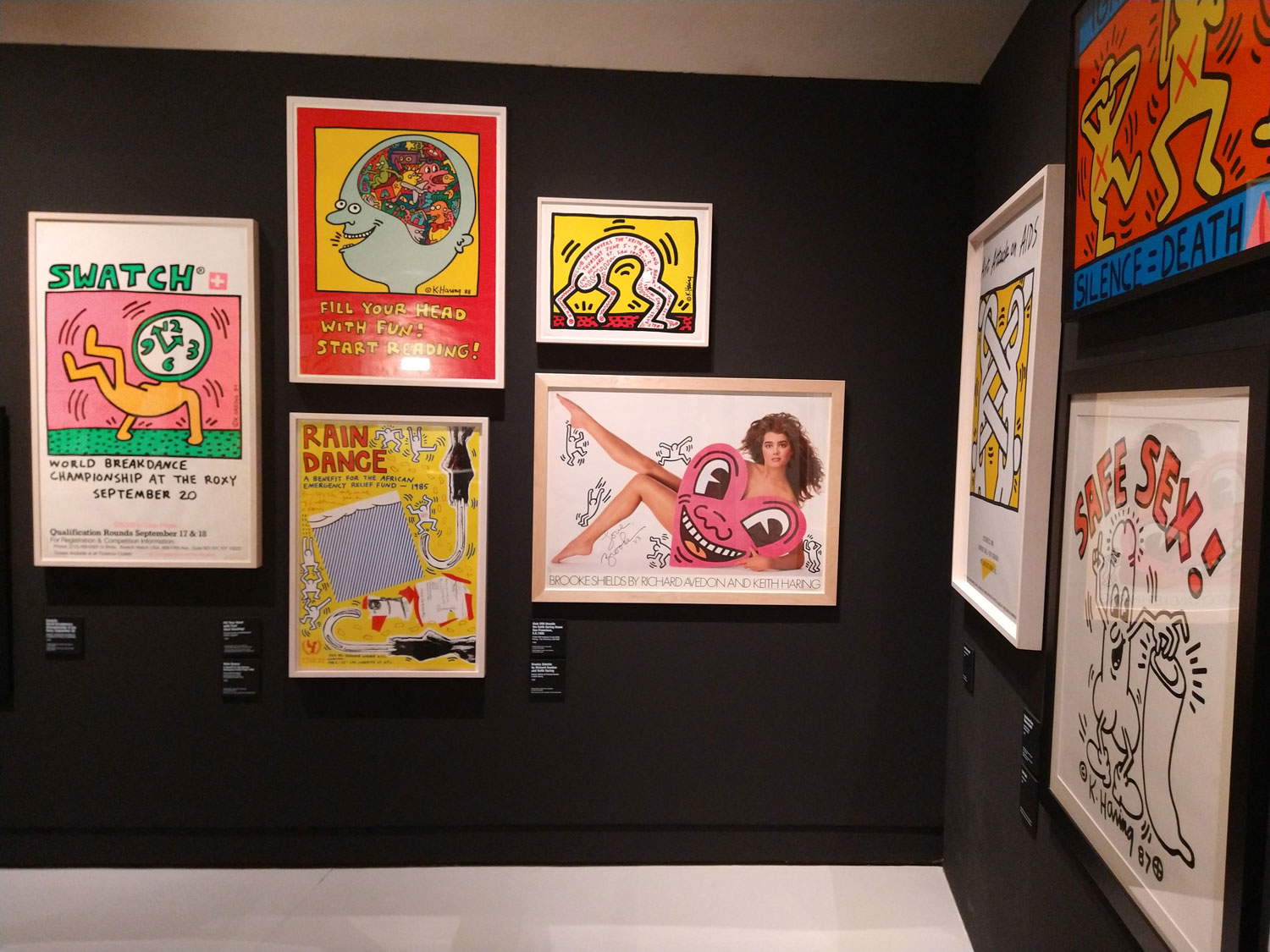
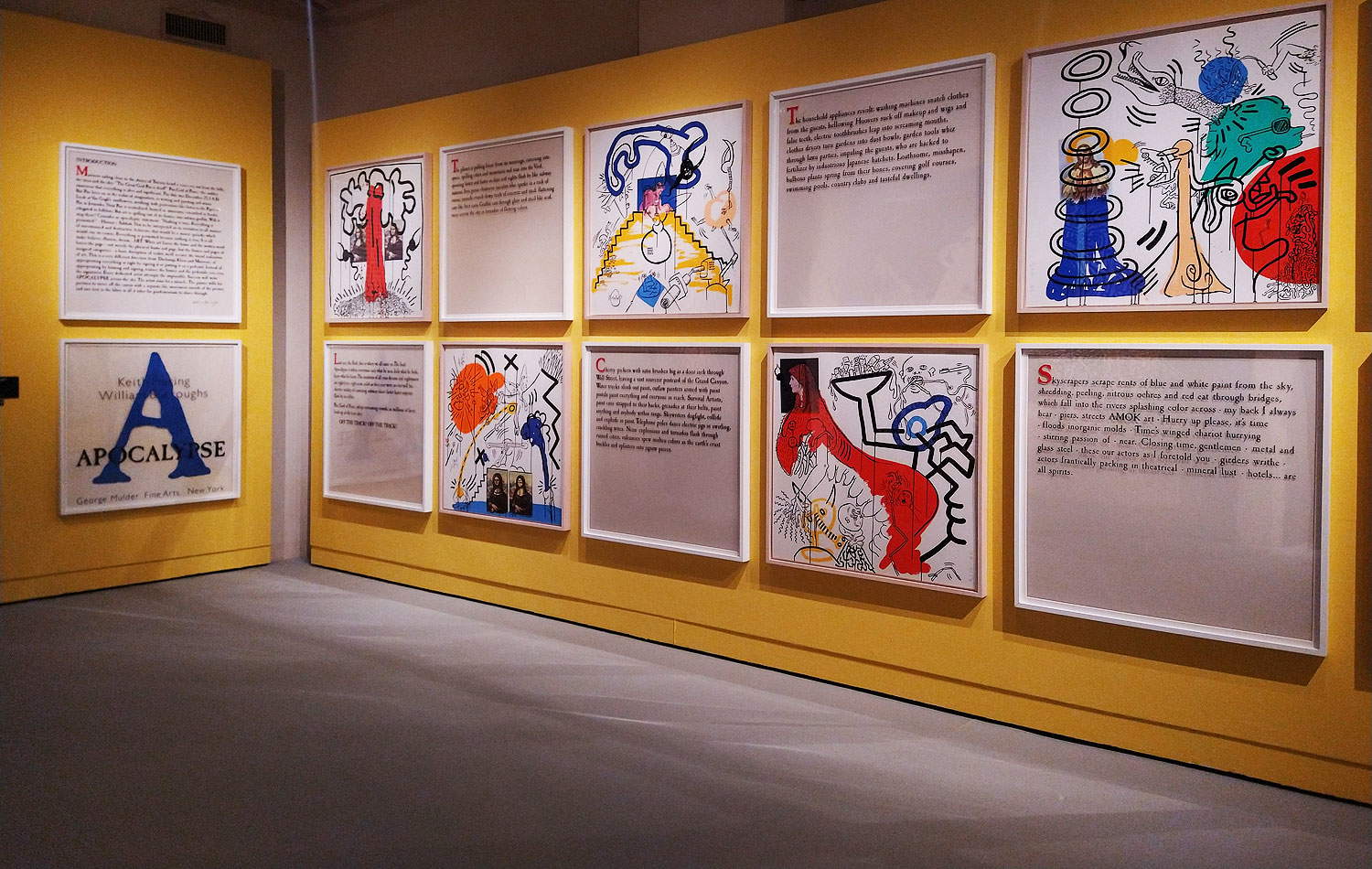
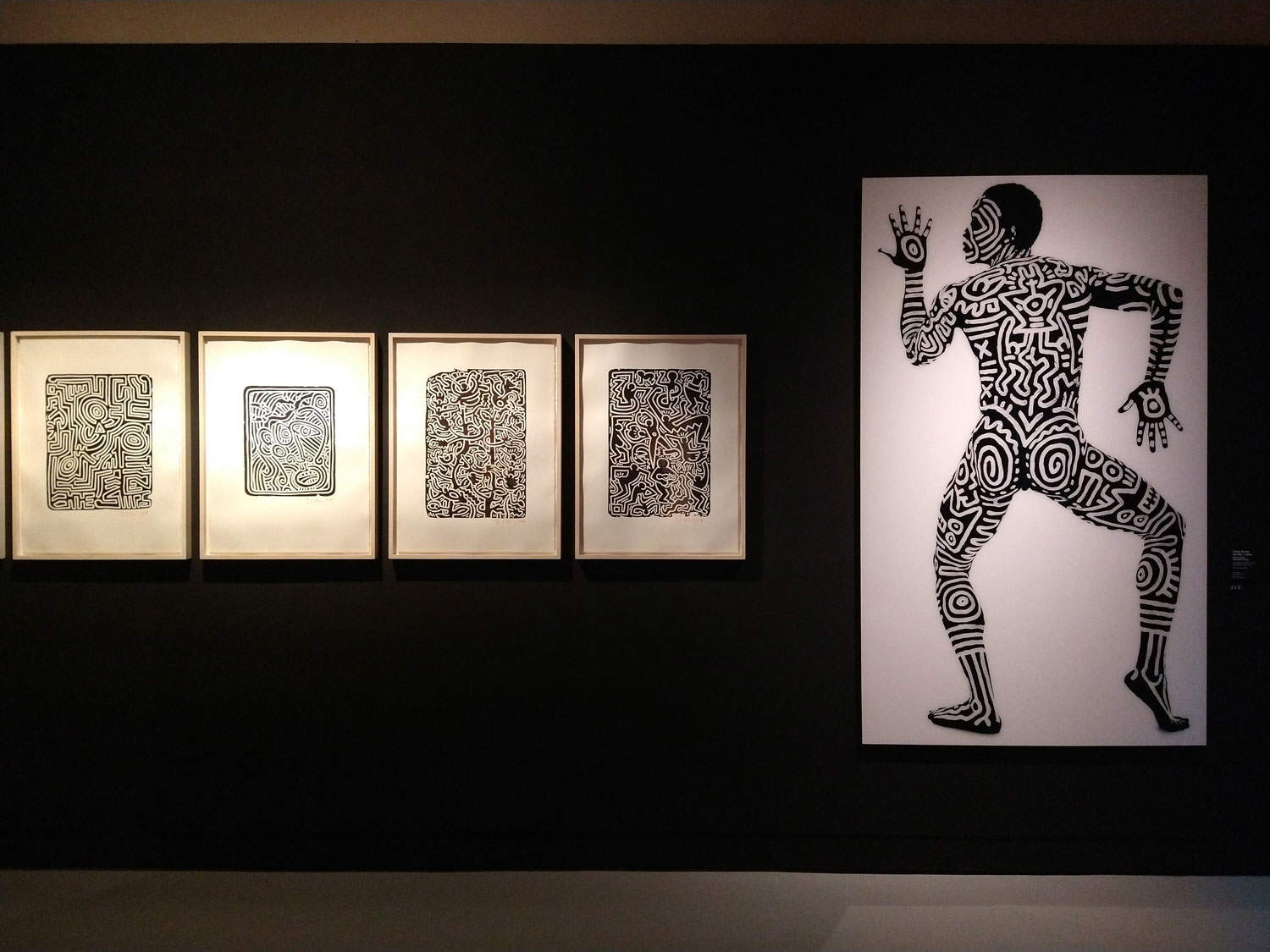
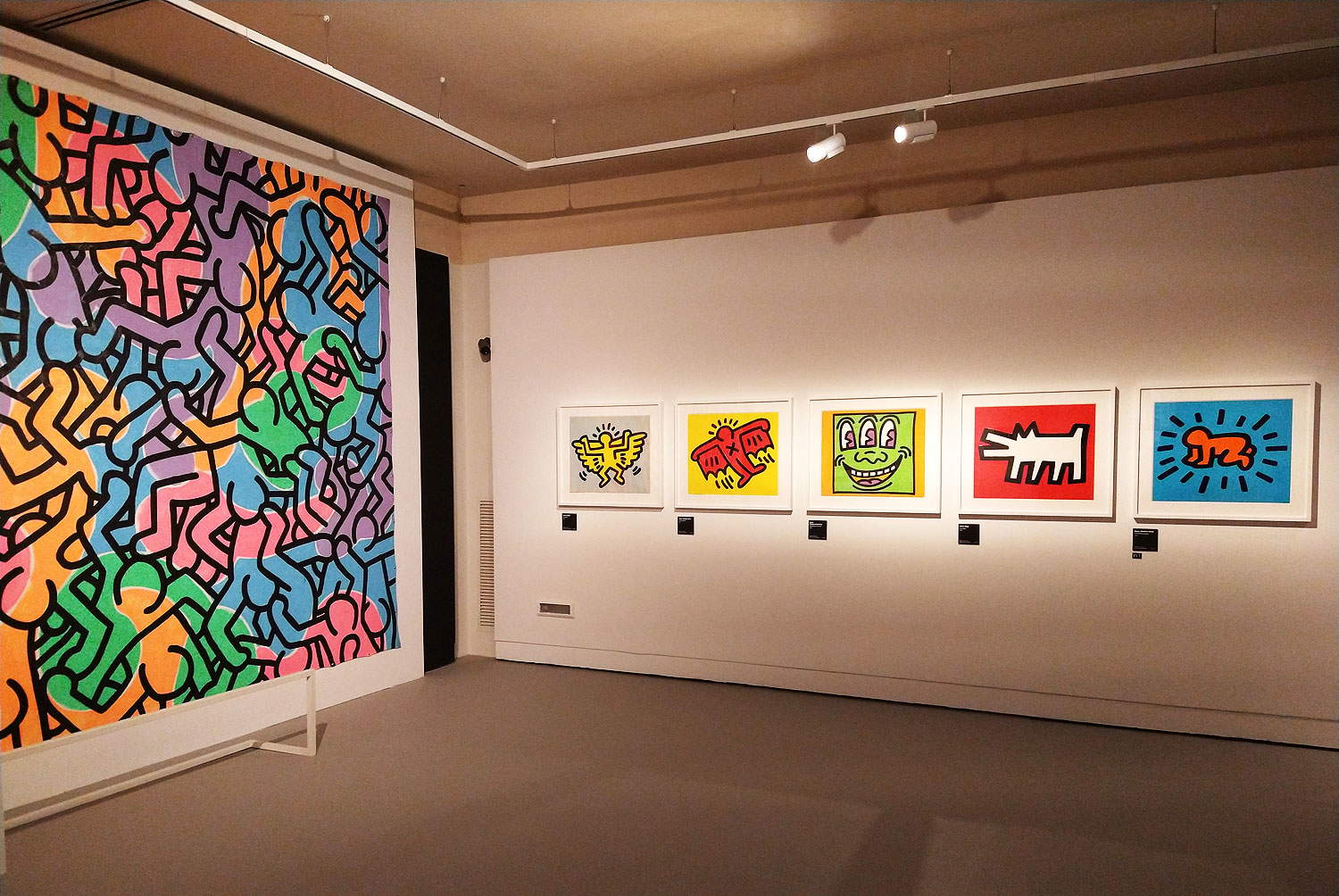
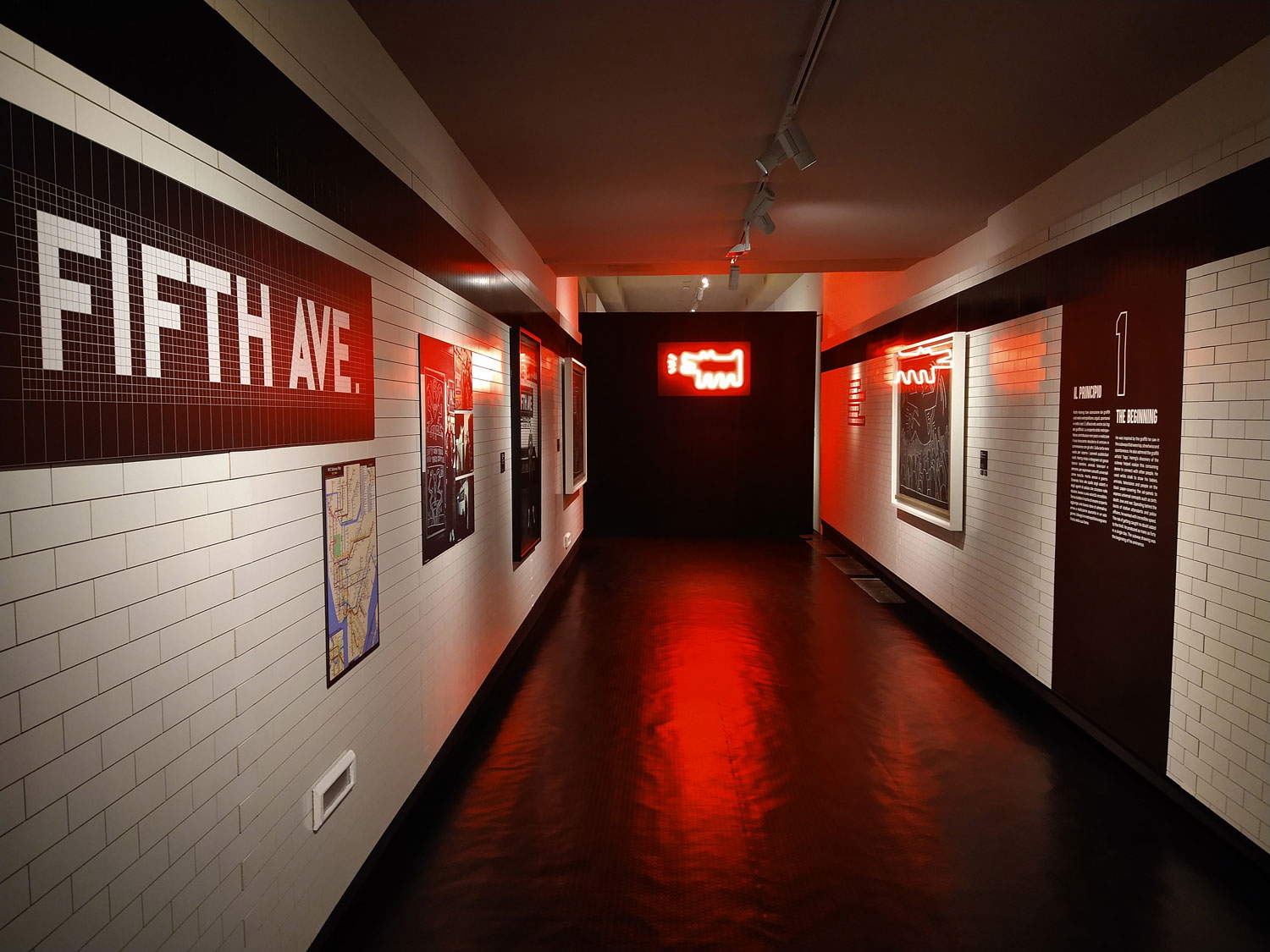
The exhibition itinerary, set up in the halls of Palazzo Blu by the architects of Panstudio, is divided into nine sections: from the Beginning, the first section (with a set-up reminiscent of a New York subway tunnel), in which the artist’s beginnings and life in New York City, where Haring moved in 1978 to study at the School of Visual Arts, are recounted. At that time the artist came out. He begins with simple graphic marks drawing children, animals, hearts, televisions, angels, pyramids and little men in white chalk over unused advertising boards in New York subway stations. Photos of his work begin to circulate and his style quickly becomes very recognizable because he creates a language that can be read at a glance, the “Haring code.” And his fame with the public grows rapidly. The section Beyond Limits takes the audience inside the fluorescent colors that glow under the artist’s black light, through a series of five silkscreens, Untitled (Fertility Suite), published by Tony Shafrazi Gallery in 1983, in which Haring gives space to his icons, symbols of vitality and fertility, always in motion, perhaps agitated.
The third section, The Stories, exhibits among others the 1989 work The Story of Red + Blue, a series of lithographs made expressly for children, used for several storytelling competitions and included in educational programs in many American schools. We then move on to Haring in Pisa, which recounts Keith Haring’s Pisan adventure, the friendship after his chance meeting with Piergiorgio Castellani, and the choral work to create the Tuttomondo mural on a wall of the Convent of St. Anthony: the Church that provided the surface to be painted, the City and Province that coordinated the project, and the students from the university who helped the artist as assistants. The next section is dedicated to Music: wherever Haring works, on the street or in his studio, he is always there. His works embody the sound of New York streets and cool clubs. He collaborates on the creation of a large number of covers, one of the best known being for a 1983 David Bowie album that depicts two little men locked in a radiant embrace. Along with the music, the audience meets the Message section: Haring’s goal is to reach as many people as possible, and posters are a tool that can establish an immediate connection with the audience. The Poster for Nuclear Disarmament, from 1982, is wordless but visually calls for an end to nuclear power. Since then Haring has created more than one hundred posters to publicize his exhibitions, concerts, products or to raise awareness of issues he holds particularly dear: AIDS prevention, gay rights, apartheid, racism, drug use, war, violence and environmental protection.
In Symbols and Icons, we find Radiant Baby, Dog, Angel, Winged Man, Three-Eyed Face, the series published in 1990, which includes the most iconic characters in his entire oeuvre. As noted in the journals, The Radiant Baby symbolizes everyone’s innocence, purity, goodness, and potential. Going upstairs, the Primordial Energy section is populated with pyramids crowded with little men, animals, suns, masks, the body painting and totems. Keith Haring’s work becomes a space between vernacular and academic art, between creation and appropriation: his works conceal mysterious powers of non-Western origin, inspired by Aztec, Eskimo, African and African-American art, as well as ancient and mythological symbols. In the next room, the section Dystopia Revealed enters a phase of Haring’s maturation and awareness. As noted in the Apocalypse series of 1988, the subject matter of his art becomes deeper and more complex. As a homosexual living with AIDS, politics and fear become the dominant themes of his works. In collaboration with beat writer William Burroughs, Haring works on this series, offering a glimpse of his personal hell: each image made with the collage technique, echoes poetry, and uses advertisements, art history references and Catholic theology to amplify scenes of chaos.
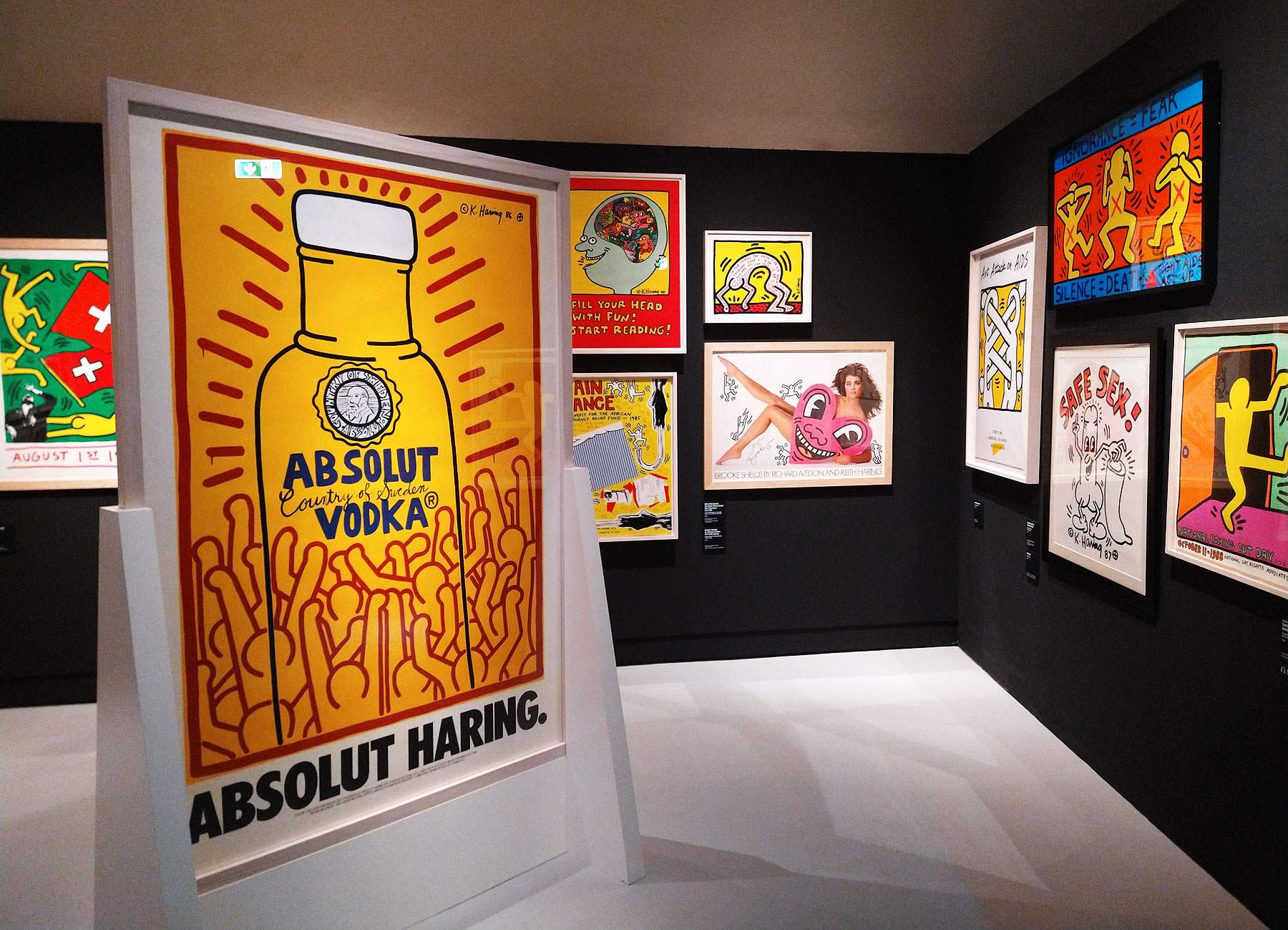
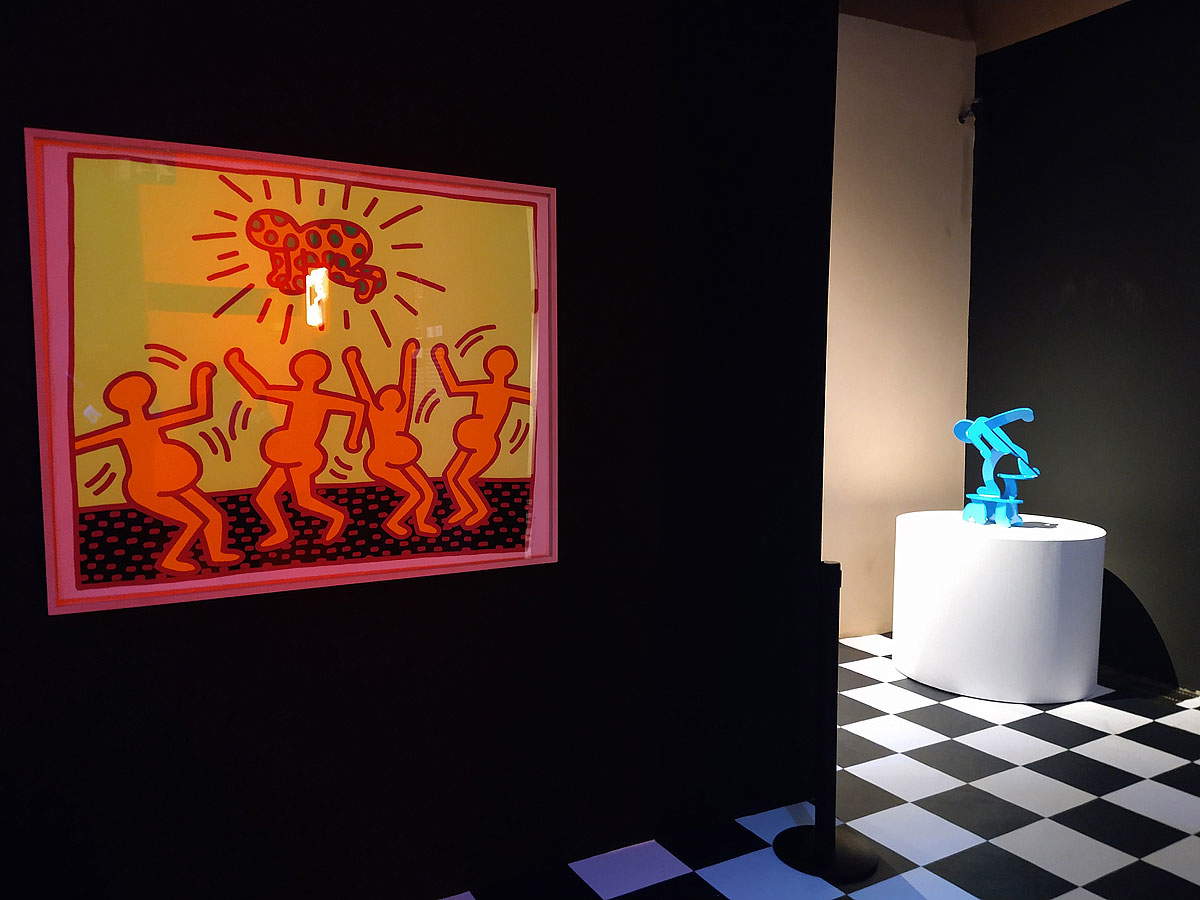
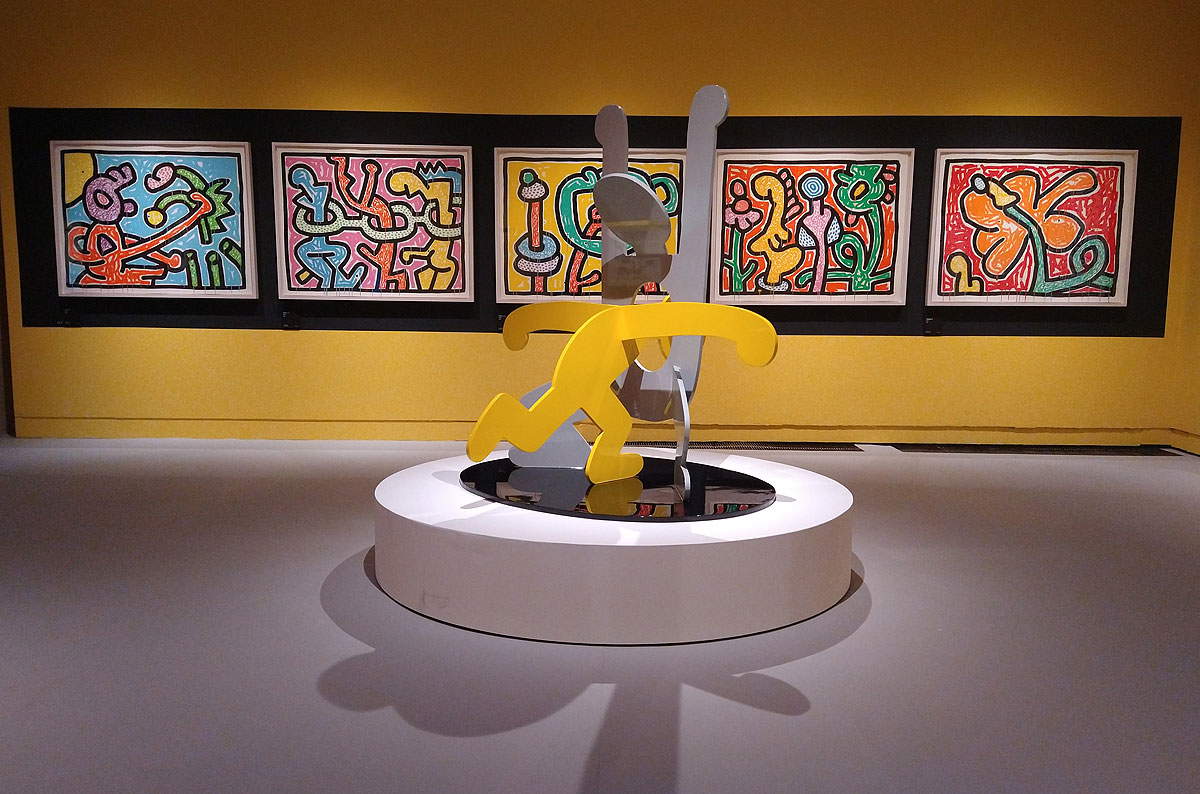
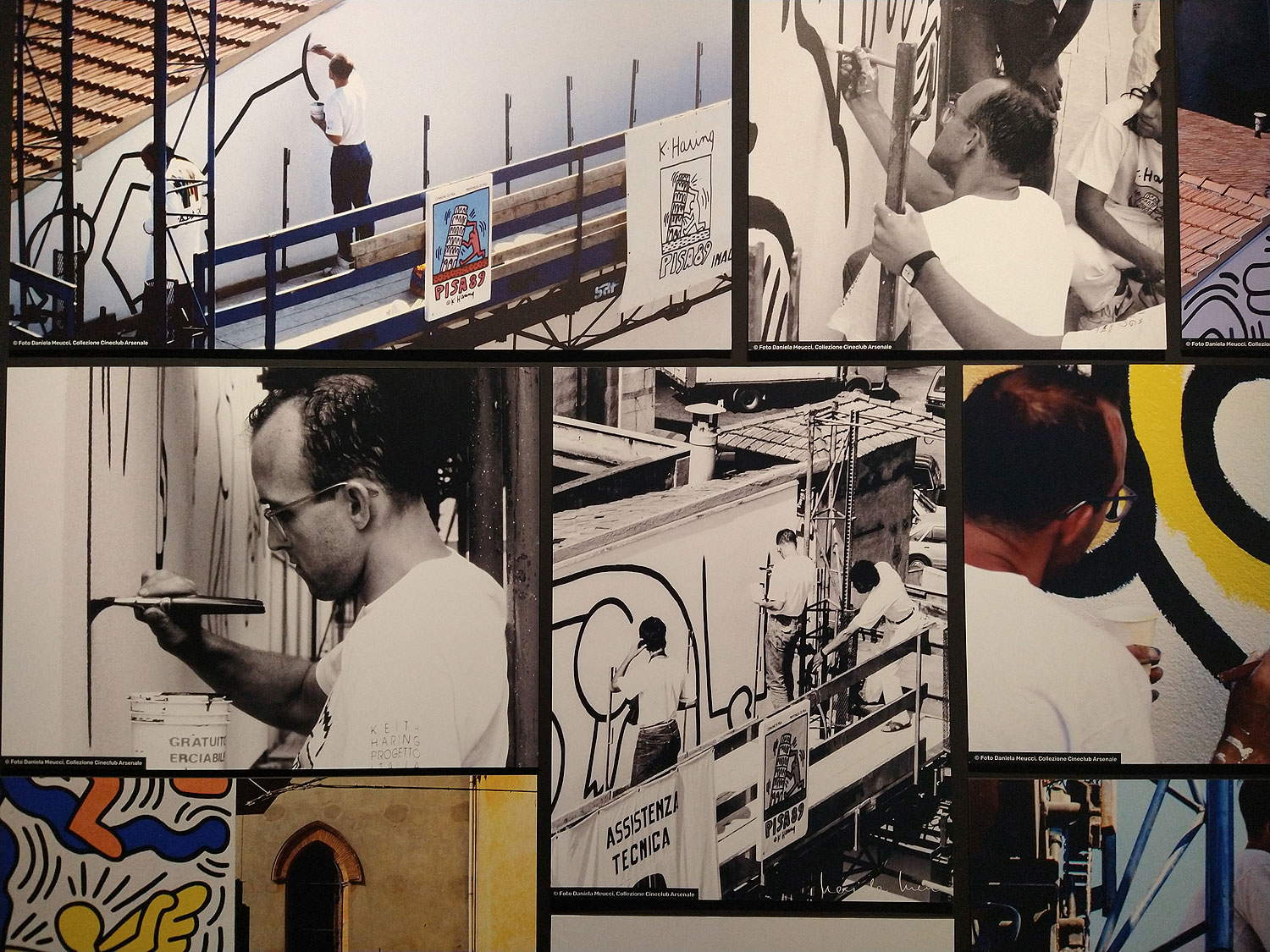
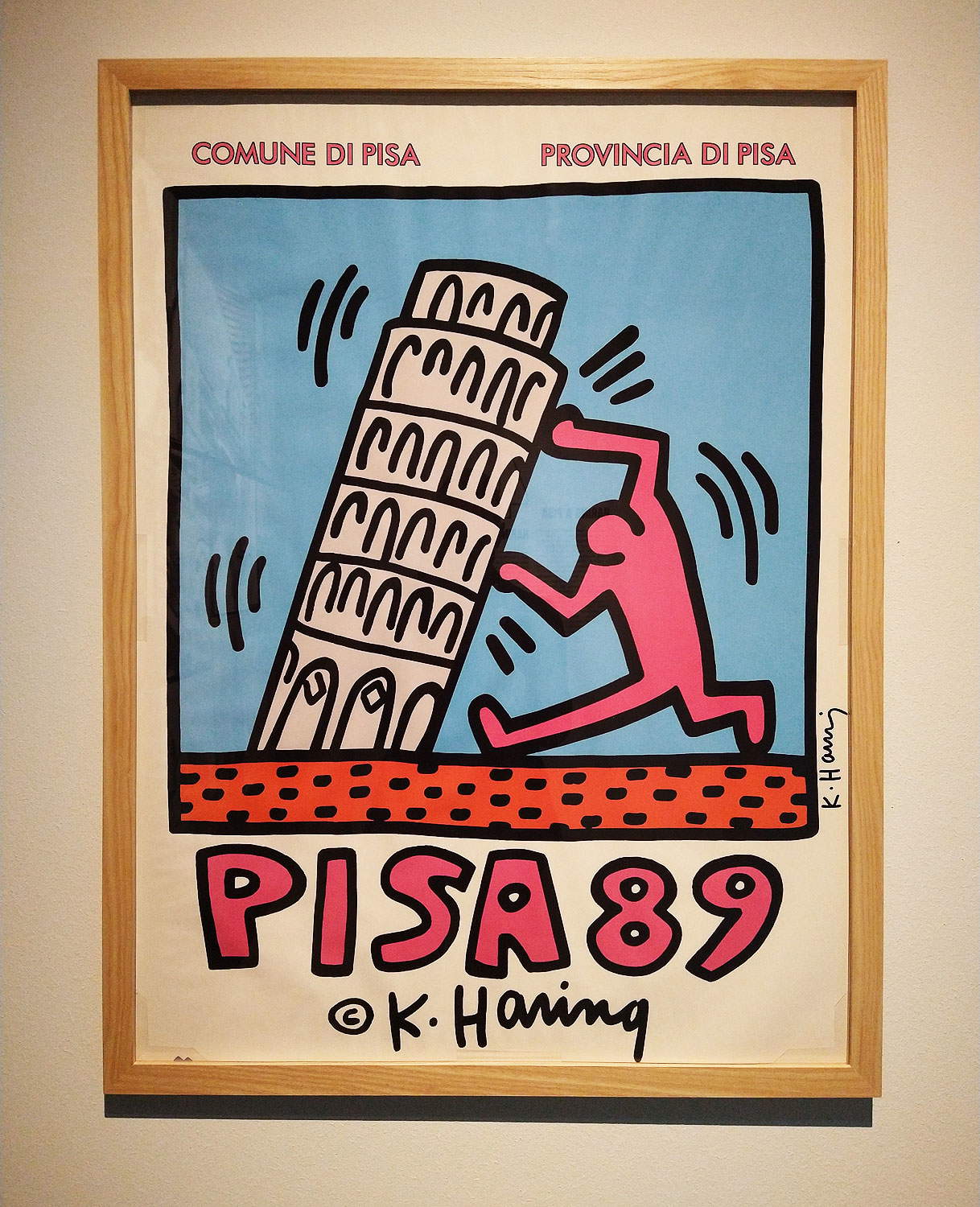
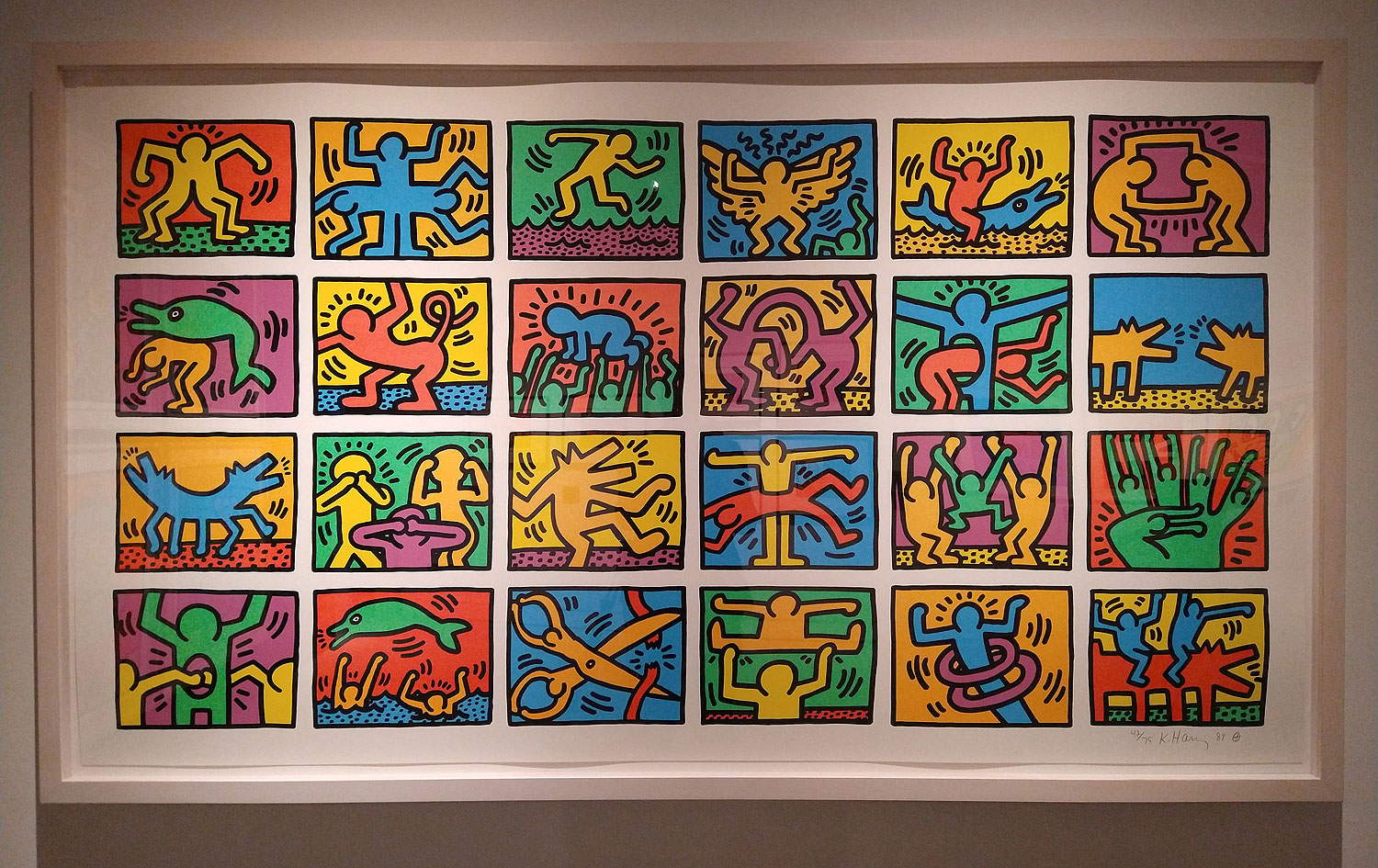
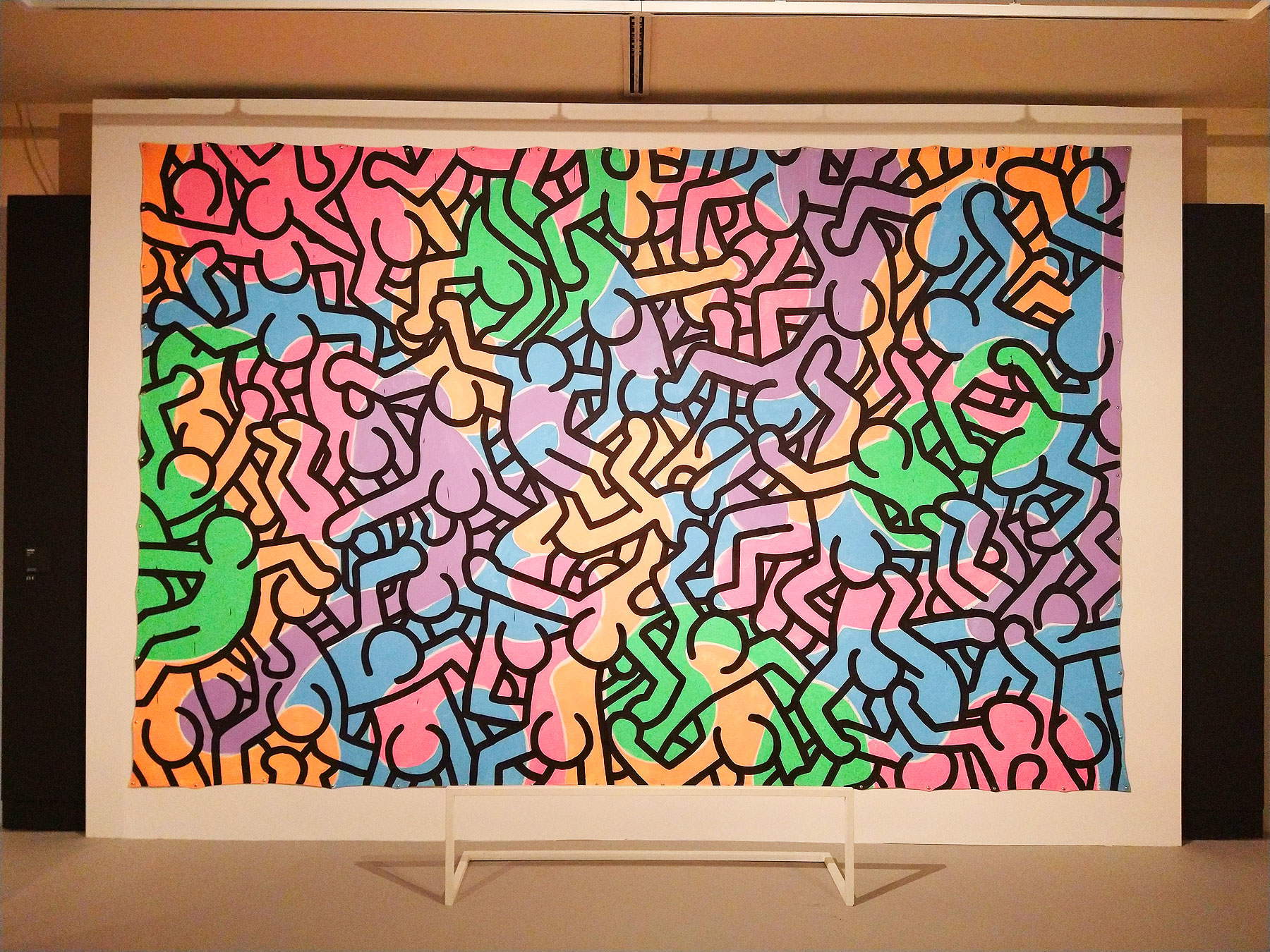
The tour ends with The End of the Beginning, which closes the exhibition with the images that best depict Haring’s iconic language: pyramids, flying saucers, dogs, snakes and children mingling with wandering figures and extraterrestrials. In 1990, shortly before his death, Haring published his last edition on paper, The Blueprint Drawings. “These 17 drawings,” Keith Haring wrote on January 4, 1990, “were born in a few weeks between December 1980 and January 1981. I did the originals on vellum with Sumi ink because I intended to reproduce all the drawings in blueprint. I regularly took them to the local blueprint shop, where I enjoyed trying to explain their contents to the machine operators. Within a few weeks, everyone in the store was very familiar with my drawings. (...) Those prints are a perfect time capsule of my beginnings in New York City.”
Keith Haring lived through the upheavals of 1980s New York when the American economy was in crisis and the city was prey to violence, drugs, discrimination and poverty. Haring has always been committed through his works to raising awareness of issues such as nuclear energy, the negative aspects of the technological age, environmental protection, rampant racism, drug use and AIDS prevention. From the very beginning of his career, Haring finds ways to merge what is unequivocally recognized as art with everyday life. And with the subject of the child, he identifies the most effective means of securing immortality. No one knows how many children he drew. Two days before his death, too weak even to speak, he takes a marker and repeatedly tries to draw something, then finally succeeds: it is the radiant child, a newborn who releases rays of power received from the universe, who possesses infinite energy, who crawls incessantly, never stopping, to everywhere, defying all danger.
“Haring’s figures,” writes curator Kaoru Yanase, “are universal symbols and can assume any role. The faceless little men represent the dynamic complexity and diversity of human lives. Globalization and information technology have changed society and turned all the world’s news into real time data. But is the planet today really a more peaceful and free place than in the old days? Had he lived longer, Keith would have continued his tireless work using every available technological medium and resource to create new wonders.”
The exhibition opens Monday through Friday from 10 a.m. to 7 p.m., Saturdays, Sundays and holidays from 10 a.m. to 8 p.m. (ticket office closes one hour earlier). Tickets: full 12 euros, reduced 10 euros (groups, over 65s, 18-25 year olds and concessionary), reduced university 5 euros (Thursday only), youth 6 euros (6-17 years old), reduced school 5 euros, free for children under 6 and disabled. Presale individual and groups 2 euros, schools 1 euro. For the opening of the exhibition, Palazzo Blu offers an extraordinary formula in the first 3 days of the exhibition: visiting hours also in the evening and reduced entrance fee. On the first weekend of opening, in fact, Palazzo Blu is giving the public the opportunity to visit the Keith Haring exhibition during extraordinary hours: Friday, Nov. 12 from 2 to 10 p.m., Saturday and Sunday, Nov. 13 and 14 from 10 a.m. to 10 p.m. Visitors who buy their ticket directly at the exhibition will be charged 10 euros (instead of 12), while for those who buy online at Vivaticket the cost will be 7 euros (plus 2 presale) instead of 14 euros. For info see the Palazzo Blu website.
 |
| Major Keith Haring exhibition in Pisa, featuring 170 works from the Nakamura Collection. Photos |
Warning: the translation into English of the original Italian article was created using automatic tools. We undertake to review all articles, but we do not guarantee the total absence of inaccuracies in the translation due to the program. You can find the original by clicking on the ITA button. If you find any mistake,please contact us.



























